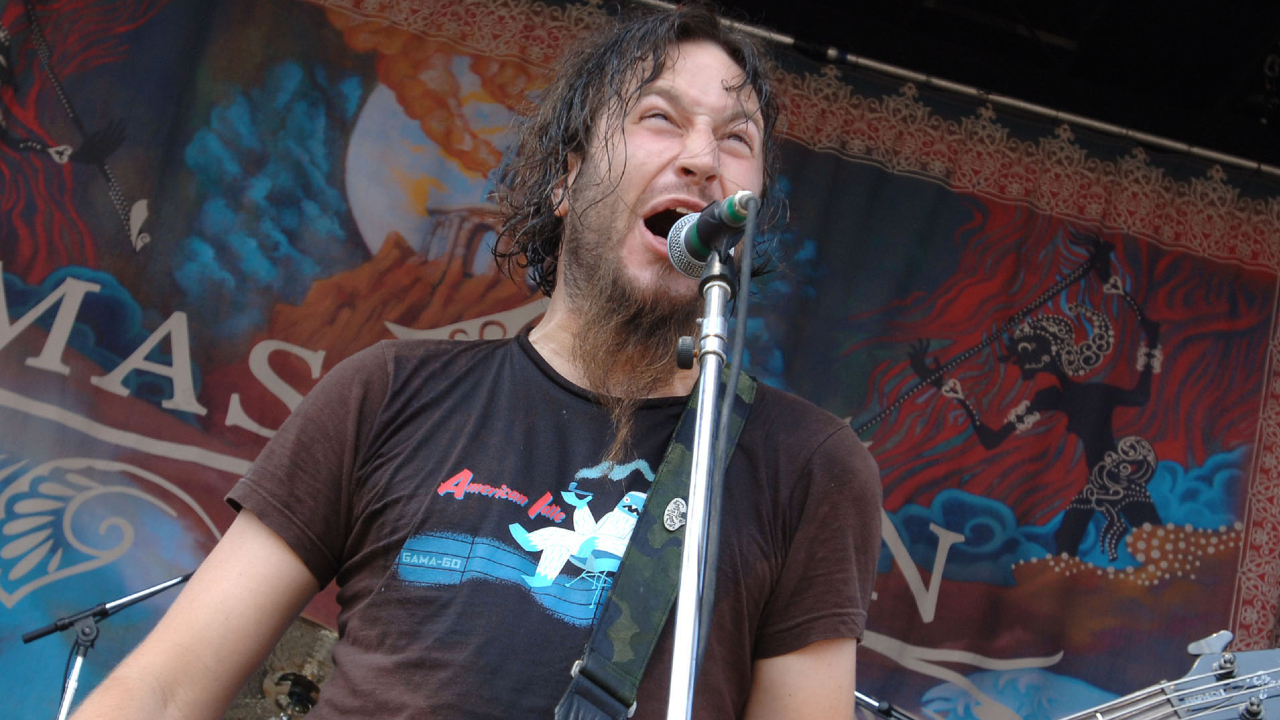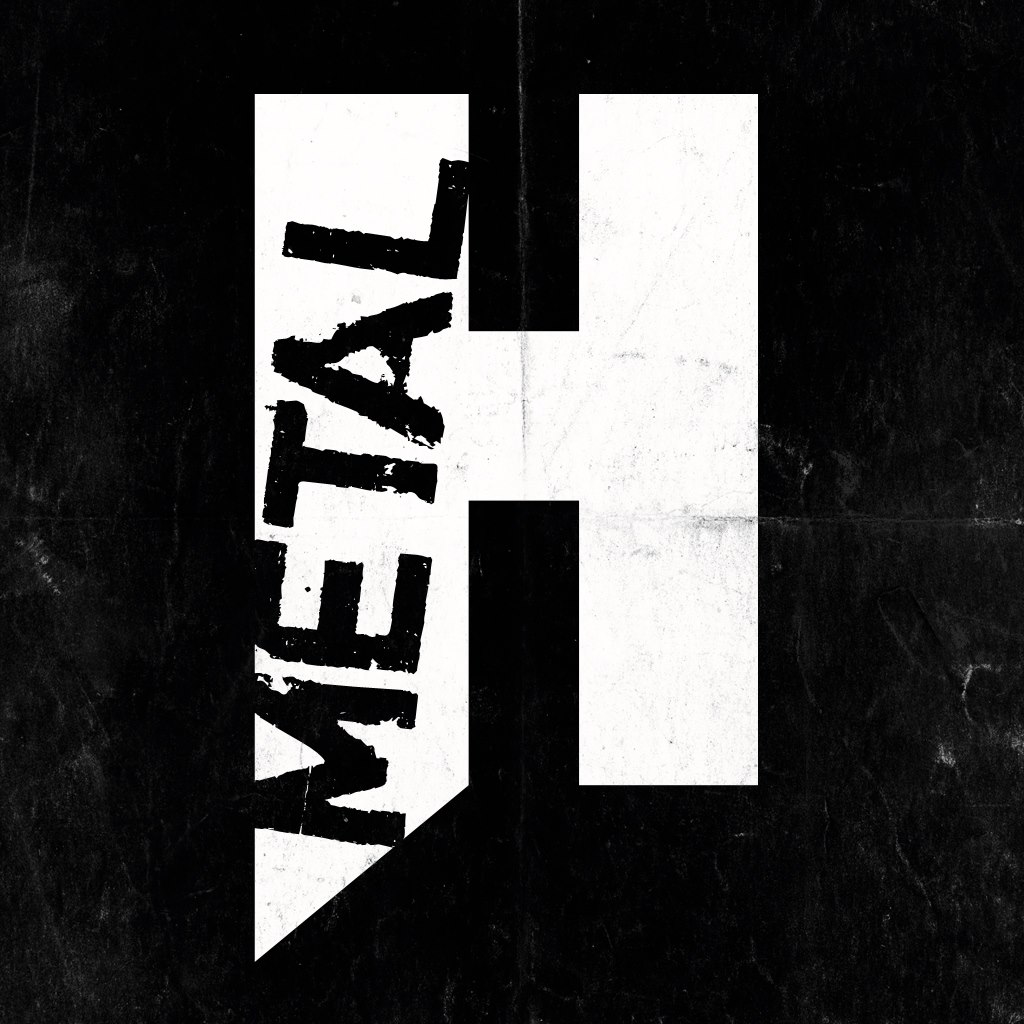“When the first riff came together, we locked in and played it for 100 hours.” How a song about a big angry whale helped four Southern misfits hang with Slipknot and Slayer - and become 21st century metal trailblazers
Making a snarling concept piece about Moby-Dick doesn’t sound like a move for mainstream appeal, but that’s exactly what Mastodon found with the lead single of 2004 masterstroke Leviathan

In 2004, nu metal was dead and the scene craved something new. Nobody needed seven-string chugging in their lives anymore, giving rise to a generation of balls-out, screaming, technical metal bands like Killswitch Engage and Lamb Of God. It was the perfect context for Blood And Thunder to grab people by the balls.
Mastodon were still cult prospects when they recorded the third single of their second album, but the song quickly propelled them to heavy music’s top tier. With its immediate riffing, roaring yet catchy hook and disorienting music video, it became the Atlantans’ signature track. It also affirmed that what the world wanted from metal had completely changed. To this day, it closes every one of the band’s concerts, and the near-100-million streams it has on Spotify prove its enduring popularity.
The story of the song starts in 2003. Mastodon were signed to Relapse Records and had attracted critical notice with their fire-spewing debut, Remission, the previous year. Drummer/vocalist Brann Dailor had to take a flight from Hawaii to London, and looking for something to ease the impending hours of boredom, he grabbed a copy of Herman Melville’s Moby-Dick from an airport bookshop. By the time he landed, he wanted to centre his band’s next album around it.
“I basically said, ‘Hey, I think it would be cool if we did a concept album loosely based on Moby-Dick,’” Dailor told Metal Hammer in 2024. “‘You guys don’t have to read the book to participate.’ I just thought it would be cool aesthetically, first and foremost.”
The album, later christened Leviathan, would become a concept piece, and Blood And Thunder would be the song that dealt most directly with the source novel. The lyrics assume the perspective of the central character Captain Ahab, expressing his obsession with finding and killing the white whale Moby-Dick. ‘White whale! Holy grail!’ singer/bassist Troy Sanders and guitarist/vocalist Brent Hinds cry during the yell-along chorus.
As for the music, like the rest of Leviathan, Mastodon wrote and refined the track on a tour supporting US stoner rock stars Clutch. The band were playing to unfamiliar audiences night in and night out, so they used the shows as an excuse to jam and rehearse as-yet-unreleased songs – no one in the crowd would know! That on-the-road energy fed into the material, with Leviathan still standing as one of Mastodon’s most to-the-point albums, and Blood And Thunder being its most to-the-point song.
Dailor told Knotfest: “When the first riff of Blood And Thunder came together, and we had everybody in the room, we started locking in and playing it. We played it for 100 hours because it was so badass! And it’ll never be heard like that by anybody else.”
Sign up below to get the latest from Metal Hammer, plus exclusive special offers, direct to your inbox!
The iconic, thudding riff that opens the song was written by Dailor, despite the drummer barely knowing his way around a guitar at the time. Guitarist Bill Kelliher told Guitar World: “[Brann’s] about as good at guitar as I am on drums – which is to say, terrible – but he comes up with a lot of riffs, and puts them into my hands.”
He added: “The thing is, he thinks of rhythms differently than I would. He was playing the beat to it [after explaining the riff], but we kept getting off time. He was like, ‘No, dude, it doesn’t go “ban-na, ban-na, ban-na”, it goes “BANT, ban-na, ban-na”.’ That simple little change… It was like learning new math.”
Mastodon stepped off of their tour bus and immediately went into the studio with producer Matt Bayles. Blood And Thunder’s middle section – ‘Split your lung with blood and thunder! When you see the white whale!’ – was sung by Neil Fallon, the frontman of Clutch. The two bands had just toured together for six weeks, but Mastodon were such fans that they still struggled to find the courage to ask Fallon to appear on the song. They also made accommodations that the singer never even asked for.
“We had two motel rooms at the Extended Stay, two guys to a room,” Dailor told Decibel. “But when Neil came to stay to do his part, we all kind of huddled in one room and let him have one of the rooms to himself. Both rooms were next to each other and you could hear him through the wall saying, ‘Guys, can you come over here?’ A couple of us went over and he was like, ‘You don’t have to do this. Someone can stay in here. I can sleep on the floor or something. It doesn’t matter.’”

Leviathan came out in August 2004 and swiftly intensified the critical acclaim surrounding Mastodon. Rave reviews came from every corner of the globe, and from there the floodgates opened. The band got a manager and were added to the bill of a Slayer tour, then they played with Slipknot. Blood And Thunder came out as a single in 2005, accompanied by a fever dream of a music video that depicted the band playing in fezzes in front of a crowd of clowns. Dailor likes clowns; the fezzes, meanwhile, were courtesy of Brent Hinds.
“My grandfather was a Shriner,” thew guitarist told Invisible Oranges. “He drove the go-karts, he wore the fezzes. When I was a kid, we would go watch parades and see him driving the go-kart in the get-up. It was super awesome. He died when I was about seven. That image just stuck with me.”
As unhinged as it may have been, the Blood And Thunder video popped up everywhere, sealing Mastodon’s ascent. Also in 2005, the song appeared in the films The Cave and Alone In The Dark, as well as the videogame Need For Speed: Most Wanted. It was inescapable.
“It was a little bit of a slow burn,” Dailor told Hammer, reflecting on the period between Leviathan’s release and Blood And Thunder blowing up. “It took maybe a year, and then really levelled the band up. A big level-up.”
Blood And Thunder remained omnipotent for the rest of the 2000s, appearing in titles in the Saint’s Row, Rock Band and Guitar Hero franchises. All the while, Mastodon played the song tirelessly on tour (setlist.fm claims that it’s been performed more than 800 times). As the tides of metal turned in the mid-2000s, Blood And Thunder made an indelible mark, and it still packs an all-adrenaline wallop more than 20 years on.
Founded in 1983, Metal Hammer is the global home of all things heavy. We have breaking news, exclusive interviews with the biggest bands and names in metal, rock, hardcore, grunge and beyond, expert reviews of the lastest releases and unrivalled insider access to metal's most exciting new scenes and movements. No matter what you're into – be it heavy metal, punk, hardcore, grunge, alternative, goth, industrial, djent or the stuff so bizarre it defies classification – you'll find it all here, backed by the best writers in our game.
You must confirm your public display name before commenting
Please logout and then login again, you will then be prompted to enter your display name.

